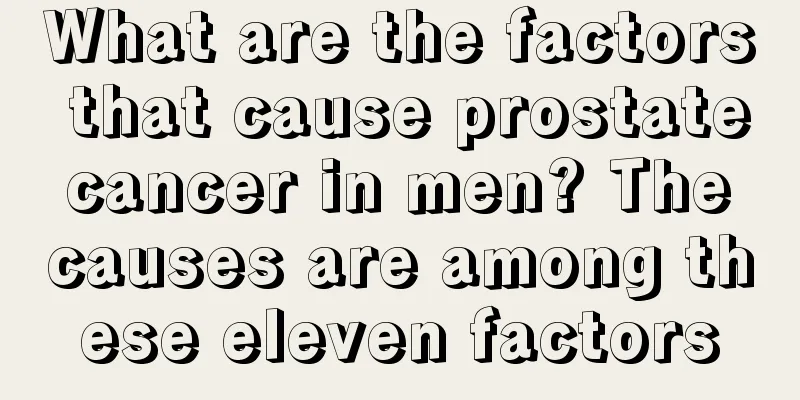What are the symptoms of different types of gliomas

|
Glioma is an unfamiliar disease that many people do not know much about. Some people only know that they have glioma during physical examinations, and some people even find out that they have glioma a long time after the early symptoms appear. So for such an unfamiliar disease that harms human health, how should we prevent it from the early stage? The following editor will learn with you the symptoms of different types of gliomas, so that you can prevent the occurrence of the disease in the early stage. 1. Astrocytoma: It is not highly malignant, grows slowly, and has a long course of disease. Symptoms appear earlier when the lesions are located under the tentorium. The symptoms of lesions in different parts of the body are different, except for the progressive chronic increase in intracranial pressure. It is mainly treated with complete surgical resection, supplemented by radiotherapy + chemotherapy, and brain herniation occurs in the late stage. 2. Astroblastoma (Astrocytoma III): The clinical manifestations are similar to astrocytoma, but it develops faster, with an average course of about one and a half years. 3. Glioblastoma multiforme (astrocytoma IV): The tumor is highly malignant, grows rapidly, and has a short course of disease, averaging 3 months. Some tumors develop with bleeding, and symptoms of increased intracranial pressure are obvious. There are often epileptic seizures, and localized symptoms are prominent and develop rapidly, with corresponding symptoms occurring depending on the location of the tumor. 4. Ependymoma: Occurs in the ependymal cells of the ventricular system and the underlying glial epithelial cells. It is more common in children and young people. It is located in the ventricles and can also extend into the brain substance. The tumor is large and occasionally multiple. The average course of the disease is one year. Those located in the fourth ventricle usually have a shorter course. It often presents with symptoms of increased intracranial pressure such as headaches and vomiting. 5. Medulloblastoma: It is a common type of brain tumor in children, mostly located in the cerebellar vermis, protruding into the fourth ventricle or filling the ventricle, forming obstructive hydrocephalus. Bleeding may occur in the tumor, with symptoms such as headache and vomiting, as well as unstable gait and standing. 6. Oligodendroglioma: The clinical manifestations are roughly the same as those of astrocytoma. 7. Pineocytoma: It is more common in children or young people. It originates from the pineal gland and is located at the back of the third ventricle. The clinical manifestations are characterized by progressive intracranial hypertension, precocious puberty, and premature development of sexual organs. Due to compression of the quadrigeminal body, it can cause upward vision disorder. Compression of the superior horn of the cerebellum can cause ataxia. 8. Choroid plexus papilloma: rare, often occurs in the fourth ventricle, lateral ventricle, and rarely in the third ventricle. The tumor is rich in blood vessels, red papillary, similar to the choroid plexus, and a few are malignant. The main clinical symptoms are hydrocephalus, accompanied by mild localization signs, high cerebrospinal fluid protein content, and a small number of red blood cells. |
<<: What are the symptoms of glioma
>>: What fruit is best for tongue cancer
Recommend
What are the common methods to prevent bone cancer
What are the common methods for preventing bone c...
Baking soda removes acne marks
Baking soda is actually a chemical product. It is...
How does Western medicine treat ruptured bleeding caused by liver cancer
How does Western medicine treat ruptured hemorrha...
What tests should be done at 7 weeks of pregnancy?
When a woman reaches the seventh week of pregnanc...
What are the symptoms of urethral caruncle?
Patients need to pay attention to the symptoms of...
How is breast cancer diagnosed
The cause of breast cancer is not yet fully under...
Can early prostate cancer be cured?
Can early prostate cancer be completely cured? Pr...
Is stage 1c ovarian cancer a lucky cancer?
Stage 1c ovarian cancer is not considered a "...
What is the difference between acute urticaria and chronic urticaria?
Urticaria is a common skin disease. It is quite h...
What are the symptoms of leg dampness?
Once moisture appears in the body, it will cause ...
Pain in the left side of the cervical spine
In life, due to some reasons that we have not not...
What's wrong with my eyelids peeling
When the air is dry in spring, our body's wat...
Eating dragon fruit will make your urine red
Will eating red dragon fruit turn your urine red?...
How many years can you live after breast cancer surgery
How many years can you live after breast cancer s...
Is it serious if a pituitary tumor compresses the optic nerve?
Pituitary tumors can cause severe compression of ...









